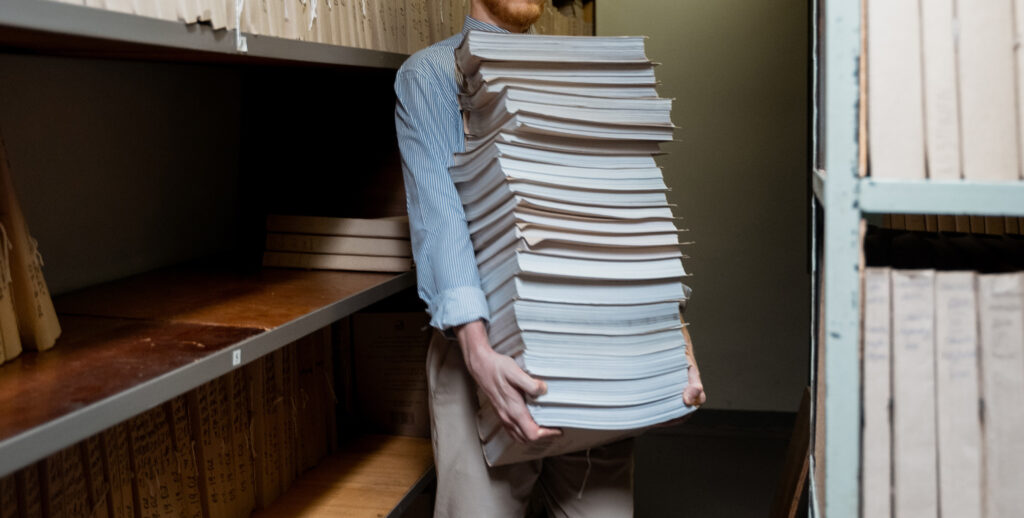You did it – you finished the paper! Blood, sweat, tears and probably a few four-letter words at points. Your findings are groundbreaking. Your conclusions have the potential to change the world. So now what? Now you need to serve up your delicious data in an appetising way, ready to be gobbled up by the media. Time to write a press release.

Why do you need to write a research press release?
There are plenty of benefits of getting your research picked up by the media (ego-boost aside). Here are a few key ones:
Make your research accessible to a wider audience
A pat on the back from your peers is all well and good, but a press release can help you make an impact beyond the science community. Your hard work deserves to be seen and it’s not going to go viral while it sits in an esoteric publication.
Simplify your research
The process of translating your findings for the media requires you to whittle a complex paper down to the key points. You’re left with a concise, simplified narrative – a handy elevator pitch to help you communicate your research beyond the press release.
Give science a seat in important debates
We can’t avoid the omnipresence of social media, and we’ve seen the harm it can do in spreading misinformation (we’re looking at you, anti-vaxxers and climate deniers). By getting your research noticed, the scientific consensus becomes more visible and can shift public perception.
Increase future funding opportunities
Outreach – everyone’s favourite buzzword. Funders often request proof that your research project will include engagement-boosting measures. By crafting a killer press release and delivering it strategically and successfully, it’ll only bolster your likelihood of funding for future projects.

What makes a research press release newsworthy?
There’s no magic formula for a newsworthy press release: you can’t predict what you’re up against in a journalist’s inbox. However, there are certain factors that give your story a better chance of cutting through the noise:
Impact
The more people that could be affected by your research findings, the bigger story it makes. If you’ve found a cure for the common cold, you’re golden.
Timeliness
Strike while the iron’s hot, your research won’t stay relevant forever. Don’t let it become a journalist’s least favourite oxymoron – old news.
Proximity
With the whole world in the palm of our hand, global news has taken over local. But even in the age of the internet, the closer to home an event is, the closer to home it’ll hit.
Prominence
Our love for celebrities is unfaltering. You don’t get much more newsworthy than the bones of a king found in a carpark. Important figures make good news, so go ahead and name drop.
Human Interest
These are the stories that speak to our shared experience, those that have a strong emotional impact. They might make us laugh or cry – the common thread is a connection to us on a human level.
Conflict
People love drama. Conflict is all part of competition and survival – it’s in our DNA. As far as editors are concerned, bad news is more newsworthy than good, and war is more newsworthy than peace.
The Bizarre
Weird creatures, weird behaviour, weird discoveries – we want weird. It’s the ultimate click-bait. If there’s an oddity amongst your research findings, lead with that.

How do you write a research press release?
Consider your audience
First things first, who are you aiming this at? Joe Public or readers of New Scientist magazine? UK or further afield? It’s important to consider how your research findings will impact the intended audience. Craft the narrative around their wants and needs.
Find your angle
You already know the 7 elements of newsworthiness – do any of these apply to your research findings? Even if it seems like a secondary detail, put the spotlight on the newsworthy aspect and structure the rest of the story around it.
Write a catchy headline
It’s your opportunity to sell the story in a few words (10 is a good benchmark) – make sure to use present tense.
Include all essential facts
If you’re playing press release bingo, a full house would be What? When? Where? Who? Why? and How? – answer these and you’re halfway there.
Avoid information overload
Cramming years of research into a few paragraphs might seem like an impossible task – to you, every detail is significant. But, too much detail and you lose the impact of the narrative. Time to get ruthless with your editing.
Use the right language
Use active language, always in the third person.
Avoid jargon
As far as you’re concerned, the reader knows nothing. You don’t need to be patronising, but you can spell out abbreviations and swap the really technical terminology for more accessible alternatives.
Include quotes
Using quotes from scientists, stakeholders or leaders can add credibility to the story, as well as providing additional information. And while the press release must be factual, quotes can add opinions to the mix.
Provide visuals
Accompany your press release with photos, videos, illustrations or infographics. It’ll help visualise abstract concepts and will make your story more engaging. If you embed the media into your press release document, remember to provide the high resolution versions with the accompanying email.
Think about your closing paragraph
You’ve given a detailed background to your research, so use the final paragraph to add more depth to the story beyond what you’ve already provided. Future ambitions of the project, exciting innovations just around the corner and, when appropriate, a call-to-action for readers e.g. an upcoming event, a call for research trial volunteers, a podcast you’re developing around your research subject. Whet their appetite.
Consider using an embargo
If you don’t want your story released immediately, you can use an embargo. This gives journalists more time to research the story, knowing they won’t be scooped by their competitors. Embargoes tend to reduce inaccuracies in reporting, and also allow you to coincide release with an announcement date or event.
Include contact details
Make sure anyone who gets their hands on your press release knows who to contact in order to follow up – name, email address, phone number.
Include a boilerplate
Essentially the ‘about us’ section of the press release, it’s a standardised paragraph that gives journalists all the information they need about your university or organisation. Check with your comms or press department to see if there’s one for you to use.
Use footnotes
Footnotes can help you embellish on certain points without making your press release too lengthy. Whether it’s URL links to information sources or additional information to add clarity to a point you’ve made, footnotes are an important tool to create a comprehensive release.
Follow a structure for your press release
The hierarchy of information is important. Take a look at our handy diagram below:
Get acquainted with those in the media
Create a database of contacts within the media, and nurture relationships. Twitter’s a great place to find and connect with journalists. Your story could get published on merit alone, but establishing connections with the right people will only improve your chances. So get schmoozing.
What next?
To get more exposure, consider more creative methods of disseminating your research. From strategy to campaigns and content, we can help you make the most of your research – just drop us a line and tell us about your project.
Like this article? We’ve got loads more where that came from. Sign up to Project: Insight, our fortnightly email digest for best practices in research dissemination and creative innovation for projects.

